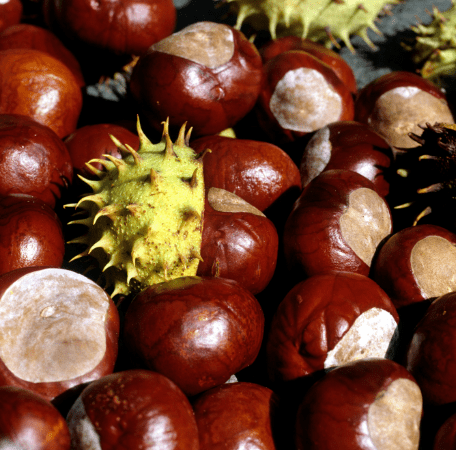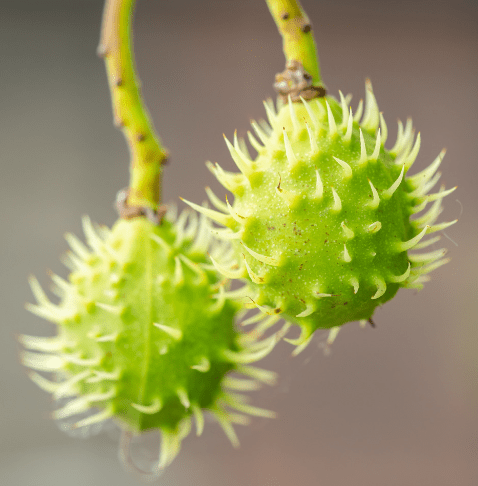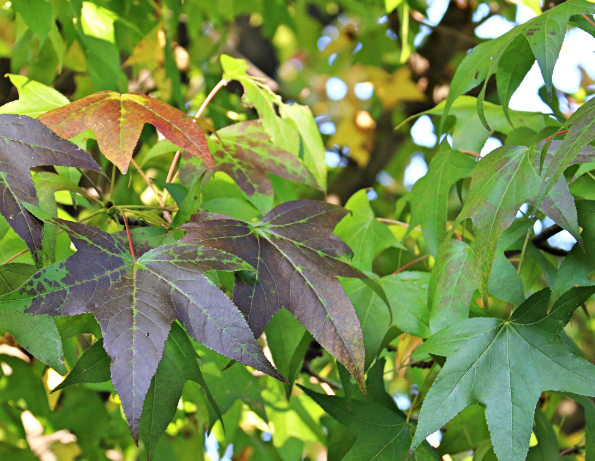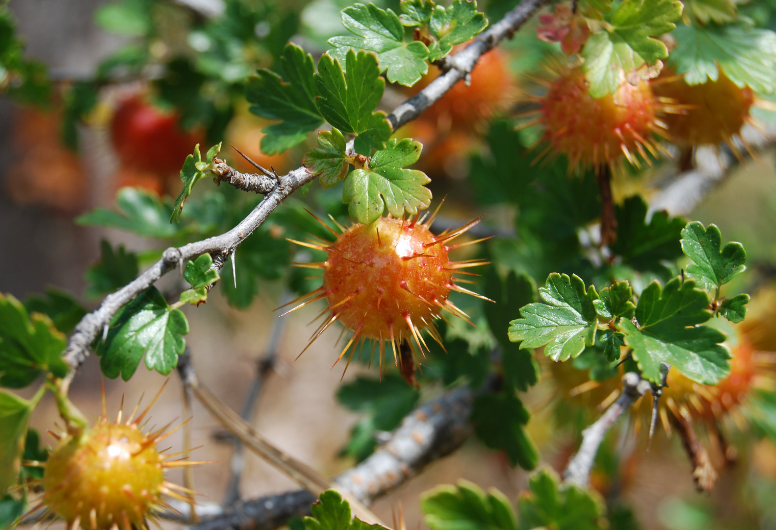What Tree Has Spiky Balls?
The sweet gum tree is one of the most common trees with spiky balls, often called gumballs. These spiny balls, typically the size of a golf ball, fall from the tree during autumn. Other trees with similar spiky seed pods include the common horsechestnut and chestnut trees.
Have you ever encountered a handful of spiky trees in nature and wondered where those prickly seed pods came from? Many trees produce round seed pods, often spiky and distinctive, that fall to the ground and leave you curious about their origin.
Let’s explore the native shade trees and their distinctive fruits, along with tips on how to identify them.
Why Learn to Identify Trees with Spiky Balls?
Identifying trees with spiny fruit not only helps you manage your garden, but it also deepens your appreciation for the most widespread native trees in North America. Knowing the unique traits of these trees allows you to better understand your environment. Plus, some of these prickly pods can be used in craft projects, composting, or even feeding wildlife like squirrels, doves, and finches.
Types of Tree with Spiky Balls
1. Buckeye/Horsechestnut (Aesculus)

The buckeye and horse chestnut trees are well-known for their spiny round balls. These trees are common landscape trees in many regions of North America.
Ohio Buckeye and Horsechestnut Description
Large glossy green leaves and spiky seed pods are characteristics of both the Ohio buckeye and horse chestnut trees. The prickly pods of these trees contain toxic seeds, making them unsuitable for consumption by humans or pets.
Leaf Characteristics and Fall Colors
These trees boast compound leaves made up of multiple leaflets. In autumn, their leaves change to a combination of yellows, oranges, and browns, making them stand out during certain times of the year.
Spiny Fruit and Toxicity
The spiny fruit of these trees is often confused with edible chestnuts, but it’s important to note that these seeds are toxic. When in doubt, consult a trained arborist to help differentiate between the two.
2. Chestnut (Castanea)

The Castanea dentata, also known as the American chestnut, is a famous tree in North America, though its population has significantly declined due to blight.
American Chestnut and Chinese Chestnut
While the American chestnut is almost extinct, its relative, the Chinese chestnut, is more commonly found in parks and gardens. Both species produce round seed pods covered in burs, and the nuts inside are edible for humans and critters alike, unlike the toxic buckeye or horse chestnut.
Leaf Characteristics and Fall Colors
Chestnut trees have long, serrated leaves that are dark green in the summer and turn golden brown in the fall. Their spiky, distinctive fruits drop during the late fall, which is a giveaway for identifying this tree.
Edibility of Actual Chestnuts
Unlike horse chestnuts, chestnut trees produce actual chestnuts that are delicious and commonly roasted. These nuts are a popular food source for wildlife like chipmunks and squirrels during the colder months.
3. Sweet Gum (Liquidambar styraciflua)

The sweetgum tree, also known as the sweetgum, is another popular species that produces round balls or spiky seed pods. These trees are known for their vibrant fall colors and star-shaped leaves.
Description of Sweetgum Tree
The sweetgum tree is one of the most widespread native trees in the southeastern United States. Its bark of the sweet gum is deeply furrowed, and the leaves turn stunning shades of red, orange, and yellow in the fall.
Leaf Characteristics and Fall Colors
The star-shaped leaves of the sweetgum are dark green during early summer and transform into bright hues during autumn, making it a popular native shade tree.
Spiky Seed Pods and Their Uses
The spiny fruit of the sweetgum tree, also called prickly pods, can be a nuisance when they fall. However, these round balls can be repurposed in craft projects or used to feed small birds and critters like squirrels and doves.
Identification Tips for Spiky Trees
To successfully identify spiky trees, you need to observe the following key features:
- Leaf Shape: Whether the leaves are palmate (like the buckeye), lance-shaped (like the chestnut), or star-shaped (like the sweetgum), paying attention to leaf structure is crucial.
- Spiny Fruit: Each tree has its own type of spiky seed pod, so knowing the size and appearance of the pods can help.
- Bark Texture: The bark of the sweet gum is deeply furrowed, while the chestnut’s bark is smooth in young trees but becomes rough with age.
- Seasonal Changes: Identifying trees during different times of the year can make it easier. In early summer, look for the shape and color of the leaves, while in autumn, the distinctive fruits and vibrant fall colors can be giveaways.
How to Avoid Confusion with Similar Trees
Some trees, like the sugar maple, may appear similar to spiky pod-producing trees but lack the round seed pods. Always pay attention to the specific features of each tree, such as their seed pods and leaves, to avoid any mix-up.
Sycamore Ball Uses
Another tree with spiky balls is the sycamore, which produces seed balls often mistaken for those of the sweetgum. However, sycamore balls are less spiky and can be used for craft projects or even as mulch in gardens.
Sycamore Trees and Wildlife
Sycamore balls also serve as a food source for birds like finches and doves. They can be added to a birdseed mixture to attract wildlife to your garden.
Engage with Your Local Environment
Take a walk in your local park and see if you can spot these trees. Whether it’s the prickly pods of a horse chestnut or the vibrant leaves of a sweetgum tree, observing these trees at different times of the year adds a new layer of appreciation for the natural world around you.
Conclusion: The Good News About Spiky Trees
The Many Benefits of Spiky Trees
The sweet gum tree and other spiky pod-producing trees, such as the common horsechestnut, play an important role in our environment. Though their gumballs and spiny balls might seem like a nuisance, they offer numerous benefits. From feeding wildlife to adding visual interest to your landscape, these spiky green fruits, often the size of a golf ball, serve a purpose beyond just dropping to the ground.
Whether you’re dealing with sweet gum tree gumballs, the spiky seed pods of the horsechestnut, or a hybrid tree with spiny balls, these trees can be appreciated for their contributions to both wildlife and the ecosystem. Their seed pods, some with a diameter as large as a golf ball, can also be repurposed in craft projects or used in the garden for an extended period. So, next time you see these spiky green fruits, take a moment to admire their unique traits and how they enhance the natural world.


























